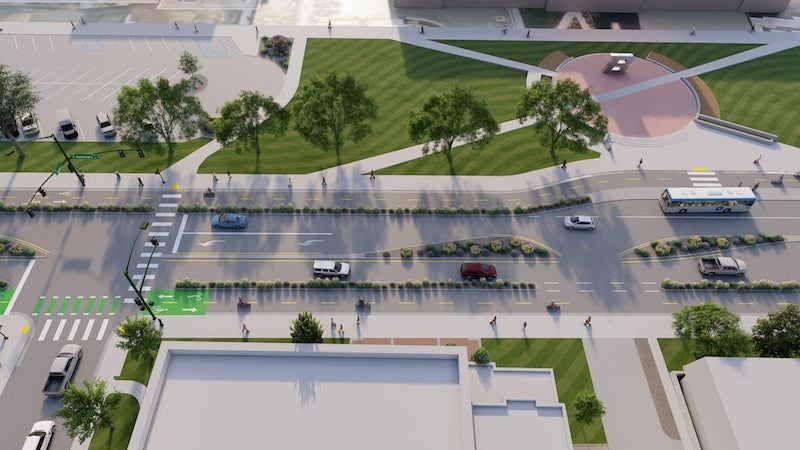The University Drive Reallocation project aims to implement a series of safety-conscious improvements on University Drive between Chrisway Drive and Lincoln Avenue. These improvements will modernize the corridor and integrate it into the campus and community in a way that accommodates all of today and tomorrow’s users.
A virtual open house is available to the public until January 10, 2021. Here you will find information about the project’s background and alternatives to improve transportation and safety on campus. The university would greatly appreciate your input on the designs. Please complete the survey found on the open house page to provide feedback on the proposed concepts.
Visit the virtual open house and provide feedback


Frequently asked questions
Why is this project important to Boise State?
Campus safety is incredibly important to Boise State. As the concentration of pedestrians and cyclists grows on campus, insufficient infrastructure becomes more apparent which often leads to safety concerns. This project will enable numerous infrastructure improvements to University Drive that promote safety for all modes of travel. Being proactive along the corridor – with better design – will reduce risk and increase resiliency to accidents.
Who owns University Drive?
The Ada County Highway District (ACHD) owns University Drive. As such, any designs that are recommended through his project will require review and approval by ACHD staff prior to construction.
Who was involved with the design process?
Boise State contracted with Kittelson and Associates to facilitate and lead the design process. Their work is assisted by a stakeholder team that includes representatives from neighborhood associations, residents, University staff and students, the City of Boise, Valley Regional Transit, and ACHD. This stakeholder team participated in design conceptualization efforts.
When might construction start if designs are approved?
Construction is dependent on funding. As such, it’s likely that implementation will be phased. Boise State’s preference is to focus initially on the section of University Drive between Theatre Lane and Lincoln Avenue.
How would the project be paid for?
Boise State must self-fund improvements within the corridor and will be exploring strategies to do so. Various transportation infrastructure grants may likely be explored.
What changes between the two alternatives?
While curb to curb widths along the corridor remain the same as existing for each alternative, the biggest difference between the two is the treatment of the bicycle infrastructure. The cycle track alternative (Alternative 2) requires more space, which is borrowed slightly from the transit islands and landscaped medians.